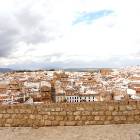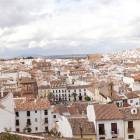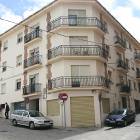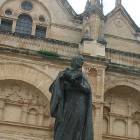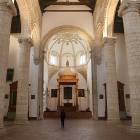Antequera, the heart of Andalusia
The small town of Antequera is a living museum, with it beautiful white houses covered with crimson tile. When taking a closer look, one notices the Arab decorations on painted sandstone tiles, most of them with exuberant blue flowers painted over white shining background. You rarely find an old Spanish city so well preserved and with such a poetic look.
The aspect of Antequera is a proof of the seven centuries of Moorish rule, that followed the miraculous conquest of the Arabs and Berbers from north Africa, that was triggered by the spread of Islam after Mohammad, in the beginning of the 8th century. The moors crossed the Mediterranean and established an emirate in the Iberic Peninsula. They were very advanced and civilized for the West European standards of the Middle Age, as stand proof cities and palaces in Cordoba and Granada. Antequera was very conveniently placed to prosper from the commerce with these surrounding cities and with the even closer Malaga and its harbor, less than 50 km away.
In the 15 century the Arab rule ended, an the Iberic peninsula was united under the Spanish crown. Today, you can see valuable remains of the several phases that marked the city, beginning with the unearth ruins from the bronze age, continuing to the Roman ruins. The Romans gave the place the name Antikaria, while the Arabs called it Medina Antaquira. In the glory days of the Byzantine Empire, Justinian was the last Roman emperor to bring Antequera under his rule. But migrating tribes overwhelmed the outskirts of his gigantic empire. Thus, when the Muslims crossed the see, they called the southern region of Spain Al Andalus, or the land of the Vandals. From the Moorish period survives the large hill fortress called Alcazaba de Antequera, which was used as a defense against the Spanish attackers.
The Christian heritage of the last five centuries is everywhere present, with some 35 churches and convents found in a city of only tens of thousands of people. The central church is that of Real Colegiata de San Sebastian, with its high Baroque bell tower. Another important monumental church, dating from the 16 century, is found near the Alcazaba. The Real Colegiata de Santa Maria la Mayor thus has a splendid panorama over the city. The church has a Gothic interior, with a wooden trussed roof, like in the ancient Greek and Roman temples. The work of architect Pedro del Campo, the church is considered one of the first attempts to use the ideas of Renaissance in Spain. The facade is an interpretation of a triumphant arch, combined with Venetian Gothic style used in other cathedrals. A bell tower was added two centuries later and incorporated in the facade. Above the altar, the Moorish vaults round the Eastern wall, completing the rectangular wooden roof, supported on Ionic stone columns.
Mai multe despre: Religious architecture, Spain • Alcazaba • Andalusia • Antequera • ionic column • Malaga • panorama • Pedro Espinosa • Real Colegiata • San Sebastian • Santa Maria Mayor • Spain- Home Page
start page - Architecture
landmark buildings - Sacred architecture
places of worship - Nature
landscape photography - Concert
performing artists - Christmas
Santa Claus pictures
- Jooble
jobs for photographers - Escape
an out of control blog - Merry Christmas
The best organizer of Christmas parties - Astro photo
Eclipse hunting and astrological photography


